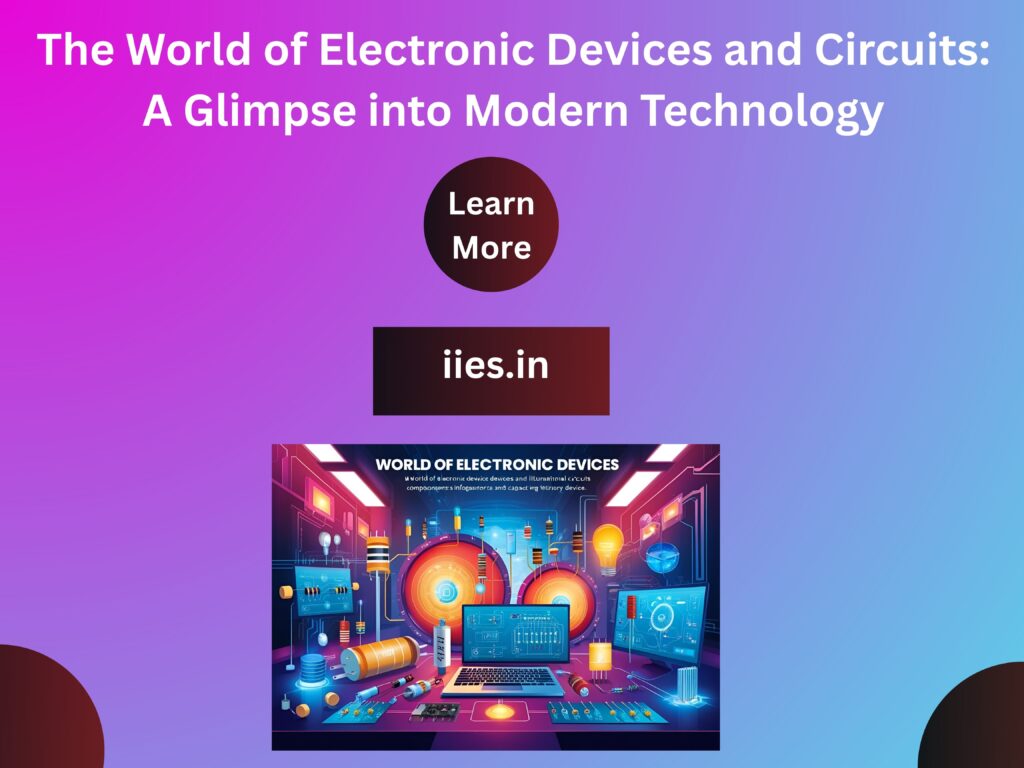What Are Electronic Devices?
An electronic device is any gadget that uses electricity to perform a specific function. These devices can be as simple as a light bulb or as advanced as the latest smartphones or medical equipment. The difference between an electrical device and an electronic device lies in their functionality. Electrical devices typically work based on the flow of electrical current to perform a mechanical action, such as a fan or a heater, whereas electronic devices rely on the control of electrical energy to process information and perform complex tasks, such as computing or communication.
Some common examples of electronic devices include:
- Smartphones
- Laptops and computers
- Televisions and entertainment systems
- Wearables (like smartwatches)
- Home automation systems (smart lights, thermostats)
Understanding Electronic Circuits
An electronic circuit functions as a pathway for electrical current, powering electronic devices. The core of each electronic circuit consists of components that manage the electricity flow. These components include resistors, capacitors, diodes, transistors, and integrated circuits (ICs), all of which have unique functions in the circuit.
Types of Circuits:
1.Analog Circuits:
These circuits deal with continuous signals, such as sound or light intensity. They are widely used in audio systems, radio transmitters, and televisions. The signals in analog circuits can vary smoothly, unlike digital circuits which are binary (on/off).
2.Digital Circuits:
Digital circuits, on the other hand, process binary signals, typically represented as “0s” and “1s.” These circuits form the backbone of modern computing, processing logic and data for devices like computers, smartphones, and gaming consoles.
3.Mixed-Signal Circuits:
As the name suggests, mixed-signal circuits combine both analog and digital components to perform a specific function. These circuits are used in devices like digital cameras, where the image (an analog signal) is converted into a digital format for processing.
Key Components of Electronic Circuits
Let us explore the critical components that comprise these circuits in greater detail:
- Resistors:These limit the flow of current within the circuit, ensuring that the current is at a safe level for other components.
- Capacitors:These store and release electrical energy, often used to smooth out voltage variations or filter out noise.
- Transistors:These are the workhorses of modern electronics, acting as switches or amplifiers. Transistors have revolutionized electronics, enabling the miniaturization of circuits and devices.
- Diodes:These allow current to flow in only one direction, often used for rectifying AC to DC in power supplies.
- Integrated Circuits (ICs):These are miniature electronic circuits containing multiple components in one package, allowing for high functionality in small devices.
- Inductors:These store energy in the form of a magnetic field and are often used in radio-frequency applications.
The Role of Electronic Circuits in Modern Devices
- Communication Devices
- Computers and Processors
- Medical Devices
- Automobiles
Advancements in Electronic Circuits:
- Miniaturization
- Flexible Electronics
- Quantum Computing
- Energy-Efficient Circuits
Future Trends in Electronic Devices and Circuits
The future of electronics is poised to bring even more exciting innovations:
- AI Integration
- IoT (Internet of Things)
- Wearable Technology
Conclusion
Electronic devices and circuits form the backbone of modern technology, shaping the way we live, work, and communicate. The evolution of electronic circuits, from basic analog designs to highly sophisticated digital and mixed-signal systems, has enabled the development of the powerful, compact, and interconnected devices we rely on every day. As technology continues to advance, electronic circuits will continue to evolve, pushing the boundaries of what’s possible and making our world even more connected and efficient.
As we look ahead, one thing is clear: the future of electronics holds limitless potential, and it all begins with the circuits that make it all possible.

